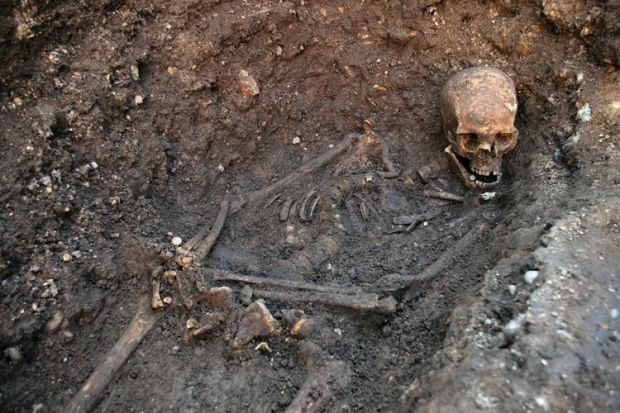The University of Leicester has strongly rejected claims made by a freelance researcher that it has “airbrushed” his crucial contribution out of its account of the discovery of Richard III’s remains.
Historian John Ashdown-Hill, a member of the Richard III Society, told Times Higher Education that in 2004 he had traced a living relative of the last Plantagenet king and, at his own expense, had sequenced and published her mitochondrial DNA in 2007.
The university used mitochondrial DNA from the same woman’s son to help confirm that remains found under a Leicester car park last year were those of Richard III. The announcement, made in February, received worldwide media attention.
Dr Ashdown-Hill said he was also instrumental in establishing the likely location of the king’s remains, and said the university had initially become involved in searching the site when its commercial archaeology arm was contracted by the Richard III Society.
But he said he had been told not to attend either the private or subsequent public announcement of the identification of the remains. “I only got the result by watching the television. I thought that was really shocking,” he said.
His name had been mentioned once at the press conference, he said. “But inevitably if [journalists] hear a name once and the person isn’t there, it isn’t going to make an enormous impact.”
He said he was currently seeking corrections of what he claims are inaccuracies and misleading statements in the account of the discovery on the university’s website.
Dr Ashdown-Hill said he had “no problem” acknowledging the contribution of Leicester academics to the discovery and admitted that it was “natural” that the university’s press office should focus on this. However, “it is possible to marry that with giving proper credit where it is due”.
He had taken informal legal advice about how to defend his “intellectual property”, including from his local MP, who he said had been supportive, but he remained unclear how to proceed.
He said he would also like to enlist the same Leicester geneticists as had been involved in the Richard III discovery to help identify possible remains of several of the king’s siblings, which he had helped to discover. “But at the moment I just feel I can’t do it because I am not sure that it wouldn’t also be taken over and I would be airbrushed out of it,” he said.
But a spokesman for the University of Leicester said Dr Ashdown-Hill was mentioned a dozen times on the university’s website and had been cited in four separate press releases, in addition to the “prominent” mention during February’s press conference. He had also appeared on the Channel 4 documentary about the excavation, which, with 5 million viewers, was its most popular documentary ever.
“Apart from [the website, press releases, press conference and documentary], you’re right, the university has never mentioned John’s important work,” he said.
He pointed out that Dr Ashdown-Hill had been present at a previous press conference in August 2012, when the dig was launched, and that the February conference had been organised specifically to highlight the work of Leicester academics in confirming the royal identity of the remains.
The decision not to invite Dr Ashdown-Hill to the private announcement had been “entirely a matter for the Richard III Society”, the spokesman added.
Register to continue
Why register?
- Registration is free and only takes a moment
- Once registered, you can read 3 articles a month
- Sign up for our newsletter
Subscribe
Or subscribe for unlimited access to:
- Unlimited access to news, views, insights & reviews
- Digital editions
- Digital access to THE’s university and college rankings analysis
Already registered or a current subscriber? Login
